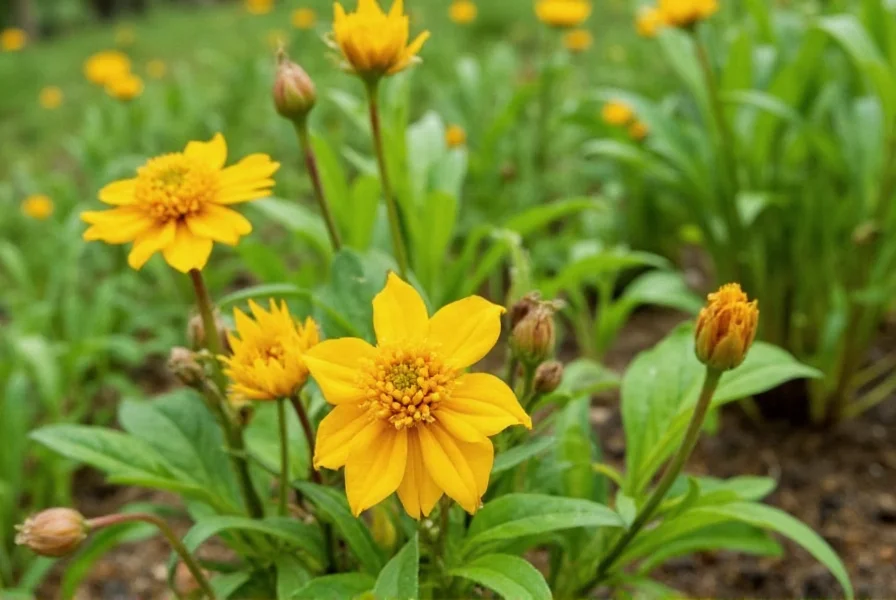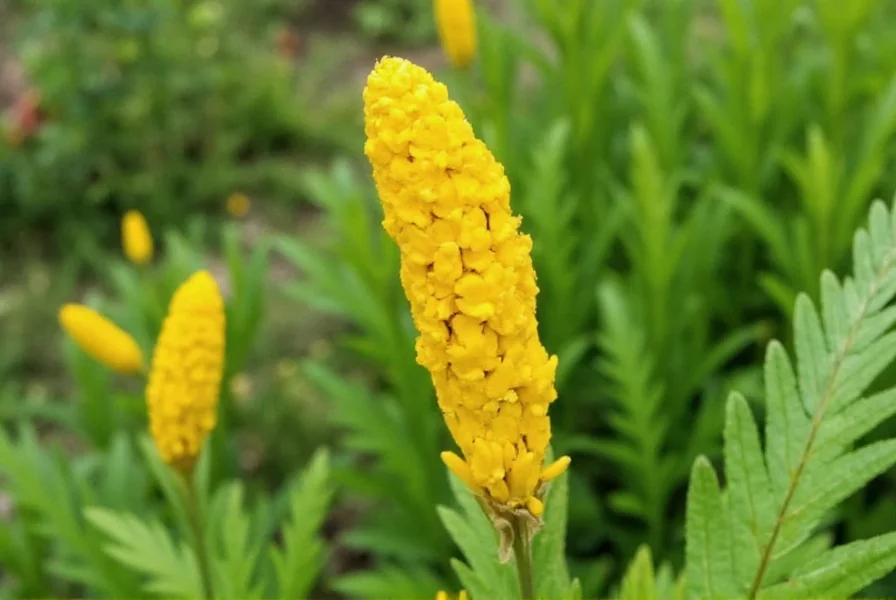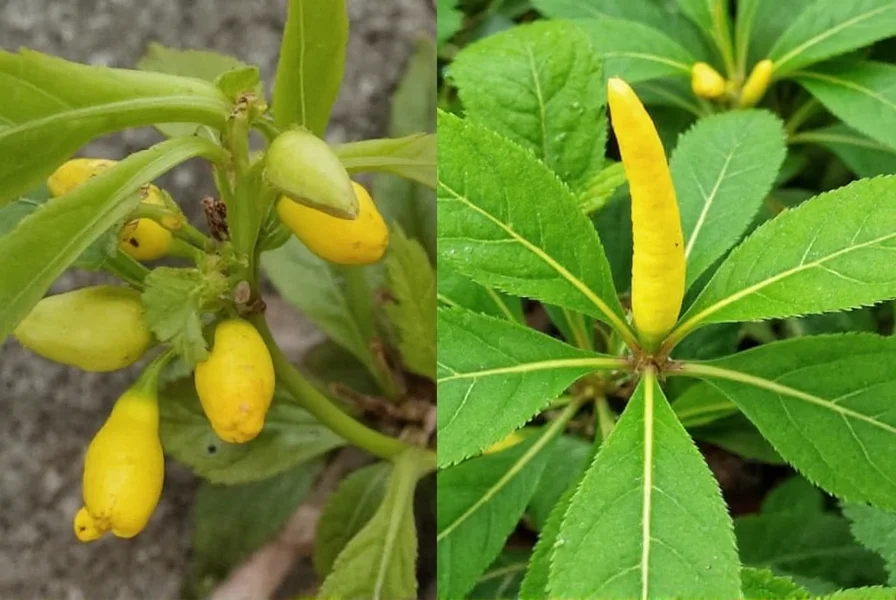Curcuma longa, commonly known as the turmeric plant, is a fascinating botanical specimen that serves as the source of one of the world's most vibrant and widely used spices. This tropical perennial belongs to the Zingiberaceae family, sharing characteristics with ginger and cardamom. Understanding the turmeric plant's natural growth patterns and requirements helps gardeners successfully cultivate this valuable crop.
Botanical Characteristics of Turmeric Plants
Turmeric plants typically reach 3-4 feet in height with long, oblong leaves that grow in pairs along the stem. The plant produces trumpet-shaped yellow flowers on separate stems, though many gardeners grow turmeric primarily for its underground rhizomes rather than its blossoms. These rhizomes, often mistakenly called roots, are the source of the spice. When fresh, they have a bright orange interior with a tough brown skin.

Native Habitat and Historical Significance
Originating in the Indian subcontinent and Southeast Asia, turmeric has been cultivated for over 4,000 years. Ancient Sanskrit texts document its use in traditional medicine and culinary practices. The plant thrives in tropical climates with consistent rainfall and temperatures between 68-95°F (20-35°C). Its scientific name, Curcuma longa, reflects its elongated rhizome structure that distinguishes it from other Curcuma species.
Optimal Growing Conditions for Turmeric Plants
Growing turmeric successfully requires attention to specific environmental factors. The plant prefers partial shade in hotter climates but needs full sun in cooler regions. Soil composition proves critical for healthy turmeric cultivation—loamy, well-draining soil with a pH between 5.5 and 7.5 works best. Amending garden soil with compost improves both drainage and nutrient content, creating ideal conditions for rhizome development.
| Growing Factor | Optimal Range | Tips for Success |
|---|---|---|
| Temperature | 68-95°F (20-35°C) | Protect from frost; grow in containers in cooler climates |
| Soil pH | 5.5-7.5 | Add compost to improve soil structure |
| Water Requirements | Consistent moisture | Reduce watering before harvest |
| Sun Exposure | Partial to full sun | Adjust based on climate intensity |
Planting and Propagation Techniques
Successful turmeric cultivation begins with quality rhizome selection. Choose firm, plump rhizomes with multiple growth buds (eyes) from organic sources to avoid treated specimens. Plant sections containing 2-3 buds approximately 2 inches deep in spring after the last frost. Space plants 12-15 inches apart to allow adequate room for rhizome expansion. In cooler climates, start turmeric indoors 6-8 weeks before the last frost date, then transplant outdoors when temperatures stabilize.
Care and Maintenance Throughout the Growing Season
Consistent moisture proves essential for turmeric plant health, though the soil should never become waterlogged. Mulching helps maintain soil moisture and temperature while suppressing weeds. Apply balanced organic fertilizer every 4-6 weeks during active growth. In regions with distinct wet and dry seasons, turmeric naturally goes dormant during drier periods, with foliage dying back before regrowing with seasonal rains.
Harvesting Turmeric Rhizomes
Most turmeric varieties reach maturity 8-10 months after planting. The optimal harvest time arrives when the leaves begin to yellow and die back naturally. Carefully dig around the plant to avoid damaging the delicate rhizomes. After harvesting, clean the rhizomes gently and allow them to air dry for several days before storage. Fresh turmeric maintains quality for several weeks when stored in a cool, dark place.

Common Challenges in Turmeric Cultivation
Gardeners growing turmeric plants may encounter several common issues. Root rot from overwatering represents the most frequent problem, particularly in heavy clay soils. Pests like aphids and spider mites occasionally affect turmeric, though serious infestations remain uncommon. In cooler climates, insufficient warmth can prevent proper rhizome development. Understanding these potential challenges helps growers implement preventive measures and address problems promptly.
Differentiating Turmeric Plants from Similar Species
Many gardeners confuse turmeric with ginger due to their similar growth habits and botanical family. While both produce rhizomes, turmeric rhizomes feature distinctive orange flesh compared to ginger's pale yellow interior. Turmeric leaves grow in a more upright pattern than ginger's arching foliage. Another common confusion occurs with yellow ginger (Curcuma flaviflora), which produces similar flowers but lacks the valuable curcumin-containing rhizomes of true turmeric.
Practical Uses of Home-Grown Turmeric
Freshly harvested turmeric offers culinary versatility beyond the dried spice available in stores. Home growers can grate fresh turmeric into smoothies, teas, and salad dressings for maximum flavor and potential benefits. The fresh rhizome contains higher moisture content and slightly different flavor compounds compared to dried turmeric. Many gardeners also preserve their harvest by making turmeric paste or freezing grated turmeric for year-round use.
Frequently Asked Questions About Turmeric Plants
How long does it take for turmeric plants to mature?
Turmeric plants typically require 8-10 months to reach full maturity from planting. The harvest time arrives when the leaves begin to yellow and die back naturally, indicating the rhizomes have fully developed. In tropical climates with year-round warmth, turmeric can produce harvestable rhizomes continuously, though most gardeners allow the plant to complete its growth cycle for optimal yield.
Can I grow turmeric plants indoors successfully?
Yes, you can successfully grow turmeric plants indoors with proper conditions. Choose a large container (at least 12 inches deep) with excellent drainage. Place the pot in a location receiving bright, indirect light for 6-8 hours daily. Maintain consistent warmth (70-85°F) and humidity levels above 50%. Indoor turmeric requires regular watering to keep soil moist but not soggy, and benefits from monthly applications of balanced liquid fertilizer during the growing season.
What's the difference between turmeric plant and ginger plant?
While both turmeric and ginger belong to the Zingiberaceae family and grow from rhizomes, they have distinct differences. Turmeric rhizomes have bright orange flesh and a more earthy, slightly bitter flavor, while ginger has pale yellow flesh with a sharper, spicier taste. Turmeric leaves grow in a more upright pattern compared to ginger's arching foliage. Botanically, turmeric (Curcuma longa) and ginger (Zingiber officinale) are different genera. Turmeric produces vibrant yellow flowers, whereas ginger flowers are typically white or yellow with purple accents.
How do I store fresh turmeric rhizomes after harvesting?
After harvesting, gently clean turmeric rhizomes and allow them to air dry for 3-5 days in a cool, shaded location. Store the dried rhizomes in a paper bag or breathable container in the refrigerator's vegetable drawer, where they'll stay fresh for 2-3 weeks. For longer storage, place cleaned rhizomes in a jar covered with vodka or vinegar to preserve them for several months. Alternatively, freeze grated turmeric in ice cube trays covered with water or oil for convenient cooking use throughout the year.











 浙公网安备
33010002000092号
浙公网安备
33010002000092号 浙B2-20120091-4
浙B2-20120091-4